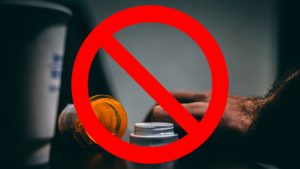Today, February 20, is the National Day to Combat Drugs and Alcoholism and the Ministry of Health points out that in addition to the damage caused to users and their families, the expenses of the Unified Health System (SUS) with chemical dependents have already reached mark of R$ 9.1 billion in a decade.
The World Health Organization (WHO) considers dependence on licit or illicit drugs to be a disease. The misuse of substances such as alcohol, cigarettes, crack and cocaine is an international public health problem that concerns nations around the world, as it affects cultural, social, economic and political values.

Marihuana
Chronic use of marijuana is associated with respiratory problems, as the smoke is very irritating and its tar content is very high, in addition to containing benzopyrene, a carcinogen. The consequences of marijuana use are similar to those of tobacco: hypertension, asthma, bronchitis, cancers, heart disease and chronic obstructive airway diseases. In the case of people with (pre-existing) psychotic disorders, a worsening of the condition, such as schizophrenia, may occur, thus requiring changes in the treatment of the psychiatric illness. Regular use causes cognitive problems such as: impairment of intellectual performance, loss of memory and problem solving ability. Withdrawal is characterized by: anxiety, insomnia, loss of appetite, hand tremor, sweating, increased reflexes, yawning and depressed mood.
Cocaine
Cocaine is a psychostimulant substance consumed in different ways: snorted, intravenously or smoked (crack). Cocaine consumption in most users increases progressively, and it is necessary to consume greater amounts of the substance to achieve the desired effect. In Brazil, cocaine is the substance most used by injecting drug users. Many of these people share needles and syringes and expose themselves to the contagion of various diseases such as hepatitis and AIDS.
Crack
Crack is the result of mixing cocaine, sodium bicarbonate or ammonia and distilled water, resulting in grains smoked in pipes. Crack consumption is higher than cocaine, as it is cheaper and its effects last less. In addition, it has a terrible action on the central nervous system and the heart.
Amphetamines
They are synthetic drugs with a stimulating effect on the central nervous system and can only be sold with a medical prescription. A type of illicit amphetamine not found in pharmacies is the drug known as ecstasy, which causes addiction, requiring the user to consume larger amounts of pills to get the same effects. Incorrect and prolonged use can cause psychological changes, brain damage and increased risk of seizures and overdose.
Tranquilizers and Sedatives
Medications that can decrease brain activity are called sedatives, while those that can decrease pain are known as analgesics. Hypnotics or sleeping pills are sedatives capable of removing insomnia, while anxiolytics are able to act on exaggerated states of anxiety.
Treatment
Those who need treatment at SUS due to abuse of alcohol and other drugs should seek out the Basic Health Units (UBS), the Psychosocial Care Centers (CAPS) and the Psychosocial Care Centers for Alcohol and Drugs III (CAPS AD). The service has multidisciplinary teams composed of a psychiatrist, general practitioner, psychologists, among others.
Prevention
It is very difficult to convince someone not to do something that gives them pleasure; drugs and alcohol, before anything else, offer immediate pleasure, and because they cause physical and psychological dependence and withdrawal syndrome, they are difficult to treat. Preventive actions must be planned and directed towards human development, encouraging education, the practice of sports, culture, leisure and the socialization of knowledge about drugs, with a scientific basis.
You will never be free if you choose to use drugs, so say NO to addictions!
Follow us on Facebook and LinkedIn. Visit the website.

